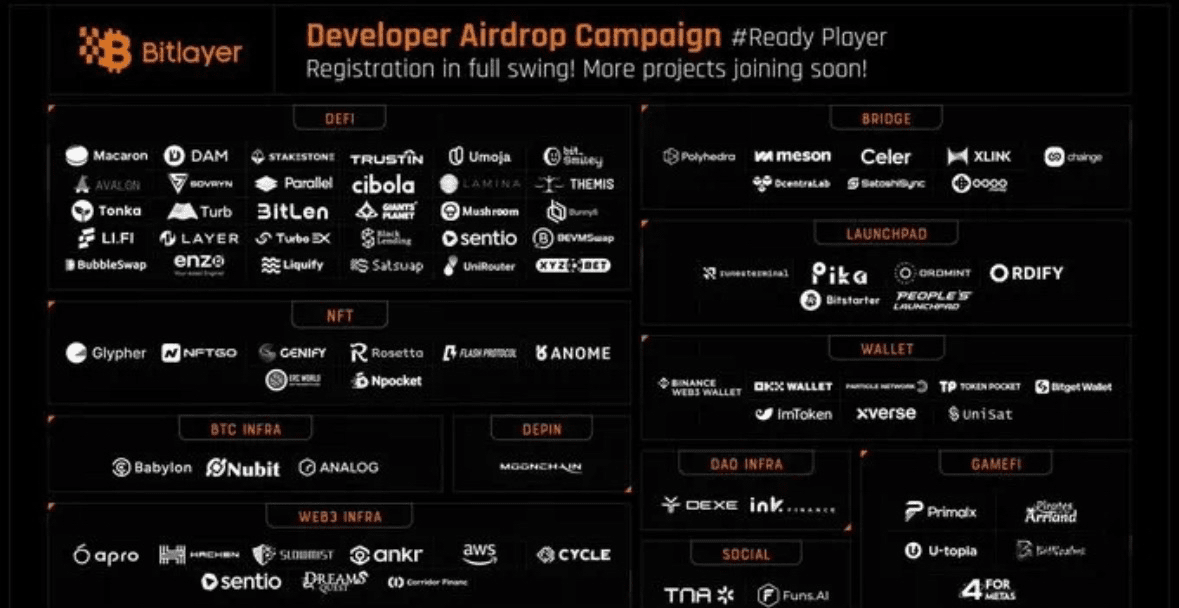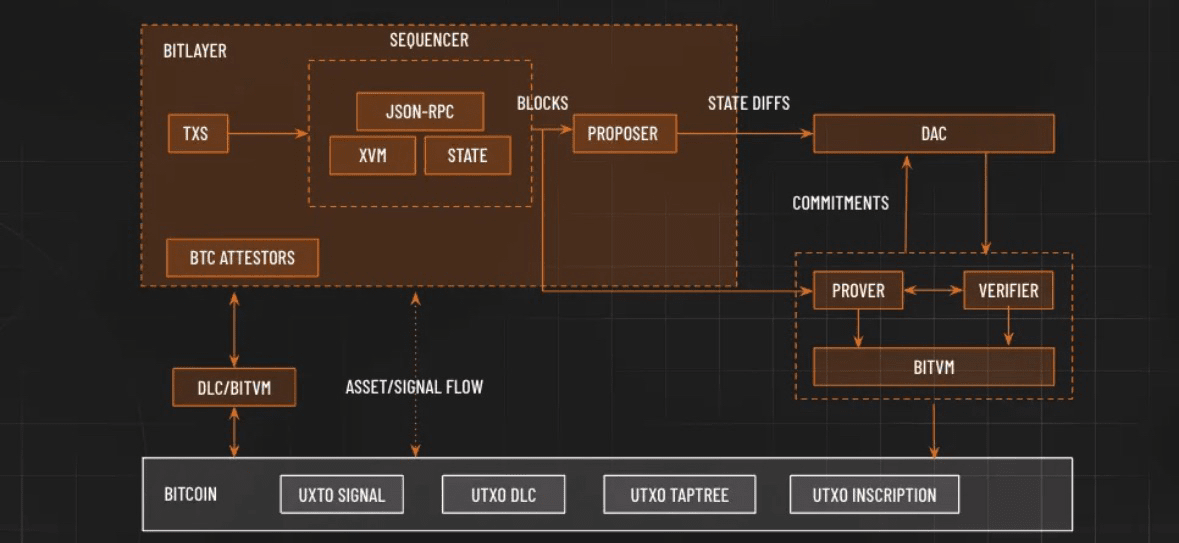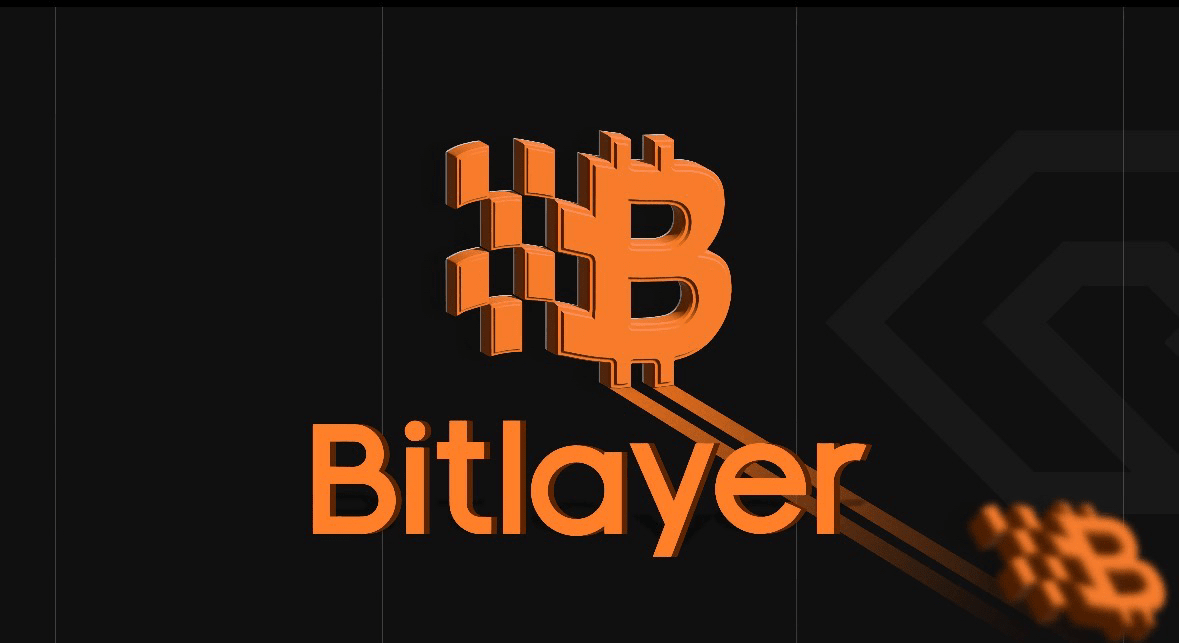In the fiercely competitive blockchain industry rankings, Bitlayer is emerging as a focal project due to its unique advantages. It focuses on solving critical challenges that the Bitcoin ecosystem has faced for a long time, such as limited scalability, insufficient smart contract functionality, and poor cross-chain asset circulation, injecting new vitality into the Bitcoin ecosystem through a series of cutting-edge technological innovations.

Introduction to the Bitlayer Project:
Bitlayer is the first Layer 2 Rollup solution compatible with EVM for Bitcoin, combining Bitcoin's security with Ethereum's programmability, bringing new vitality and possibilities to the Bitcoin ecosystem.
Bitlayer is built on the groundbreaking BitVM paradigm, directly verifying state transitions on the Bitcoin base layer through an innovative aggregation architecture, thereby inheriting Bitcoin's security. It is fully compatible with EVM (up to the Cancun update), allowing Ethereum developers to seamlessly migrate applications using familiar tools like Solidity and MetaMask, lowering development barriers and costs.

Introduction to the Bitlayer Team:

Kevin He: Co-founder of Bitlayer, previously Vice President of Technology at New Fire Technology, Senior Technical Director at HTX, and Chief Scientist at YOUChain. He holds a master's degree in Software Engineering from Peking University.
Charlie Yechuan Hu: Co-founder of Bitlayer, previously a managing partner at LucidBlue Ventures, and has worked on projects such as Polygon, Tezos, and Polkadot. He graduated from Nairode Business University and Beijing Foreign Studies University.
Bitlayer Financing Situation:


Bitlayer Token Information:
The token of Bitlayer is BTR, with a total supply of 1 billion.
Token Use: BTR is a utility token used to pay for all gas fees associated with smart contract interactions and transactions. Nodes participating in validation and security consensus must stake BTR. BTR holders can also participate in governance proposals and voting on Bitlayer network parameters. Additionally, developers, bridge builders, and ecosystem contributors will receive BTR rewards.
Launch Trading Situation: The BTR token opened a Pre-TGE event in the Binance wallet on July 24, 2025, raising a total of $400,000, with a maximum investment of 3 BNB per user. All BTR obtained through the event is subject to a lock-up period, with unlocking and trading times to be announced separately by the project team.
Token Distribution: In the Bitlayer Booster event, the project team has set aside 30 million BTR (3% of total supply) as rewards, and users holding at least 61 Binance Alpha points in their Binance wallets can participate.

Core Functions of Bitlayer:
Bitcoin Equivalent Security Model: Bitlayer directly verifies second-layer state transitions on the Bitcoin base layer through an innovative Rollup architecture, inheriting Bitcoin's unparalleled security. This approach ensures that all transactions and smart contract executions benefit from Bitcoin's robust consensus mechanism and immutable ledger, providing users with the highest level of security in the blockchain ecosystem.
Fully EVM-Compatible: The platform supports EVM-compatible smart contracts prior to the Cancun update, enabling seamless migration of existing Ethereum applications into Bitcoin's secure environment. Developers can quickly build, test, and deploy decentralized applications on Bitlayer using familiar tools like Solidity, lowering development barriers and costs.
Trust-Minimized Cross-Chain Infrastructure: Bitlayer integrates the BitVM bridger, allowing secure and efficient cross-chain Bitcoin transfers without relying on centralized custodial entities. This bridger implements a pre-recovery workflow with error proofs on Bitcoin Layer 1, providing users with trustless asset flow between Bitcoin and the Bitlayer ecosystem.
Ultra-Low Transaction Costs: Bitlayer significantly reduces transaction costs through its efficient Rollup architecture, making complex smart contract interactions economically feasible for users. The platform's optimization mechanisms can achieve complex DeFi operations at costs far below those on the Bitcoin chain while ensuring security.
Supports Bitcoin Native DeFi Applications: Bitlayer supports complex decentralized finance protocols, allowing users to participate in lending and yield farming using Bitcoin and other assets, with smart contracts ensuring trustless execution and automatic settlement, fully leveraging Bitcoin's security while providing programmable functionality.

Ecological Progress and Market Potential:
Yield Products: The launched BTC Yield protocol achieves lossless Bitcoin yield through Layer 2 cross-chain architecture, supporting zero-knowledge proof technology for liquidity mining, with annual returns up to 50 times that of traditional financial products. On its first day, TVL exceeded $780 million.
Institutional Cooperation: Strategic partnerships have been established with over 20 institutions, including Grayscale and Coinbase, deepening collaboration with ETF issuers and treasury companies to promote the development of on-chain applications in the Bitcoin ecosystem.
Future Plans: After the mainnet launch, focus will be on multi-chain interoperability to further expand ecological application scenarios.

In the fiercely competitive blockchain industry rankings, Bitlayer is emerging as a focal project due to its unique advantages. It focuses on solving critical challenges that the Bitcoin ecosystem has faced for a long time, such as limited scalability, insufficient smart contract functionality, and poor cross-chain asset circulation, injecting new vitality into the Bitcoin ecosystem through a series of cutting-edge technological innovations.





